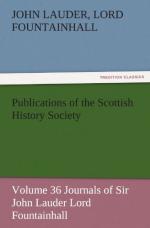[34] Once mentioned by Lauder, p. 220.
[35] This table may be compared
with Louis XIII.’s valuation of some of
these coins (p. 80). The Scots piece
there mentioned with two
swords, and the legend Salus, etc.,
is no doubt the sword and
sceptre piece of James VI. (1601-4).
But the issue value of the
whole piece, not the half piece, was 611.
Scots.
L s. D. Scots. L s. D. Scots. formerlie current at now to be current at The Double Angel [36] 13.06.08 14.04.08 The Single Angel 6.13.04 7.02.04 The Dager Peice 6.13.04 7.02.04 The Scots Ryder 6.13.04 7.02.04
The New Peice[37] 12.00.00 12.16.00 The Halfe 6.00.00 6.08.00 The Quarter 3.00.00 3.04.00
The Rose Noble, Scots
and English. 10.13.04
11.07.04
The Hary Noble 9.06.08 9.19.00
[36] Lauder’s Jacobus.
[37] Lauder’s Carolus.
(3) Dollar. In Lauder’s accounts the reader is struck by the prominent position of the dollar. While debts and obligations were calculated in pounds Scots or merks, dollars supplied the currency for household and other payments, just as pounds do at the present day. They were foreign coins of various denominations and various intrinsic value, but of inferior fineness to the Scots standard of silver money, which was eleven penny fine—eleven parts silver to one part alloy. They passed current for more than their intrinsic value, and the native silver money was withdrawn from the country. All through the reigns of Charles I. and Charles II. the subject gave great concern to the Mint, the Parliament, the Privy Council, and bodies with commercial interests like the Convention of ‘Burrowis.’ In 1631 the Privy Council issued a proclamation ’considering the greit skarsitie of His Majestie’s proper coynes ... occasioned by the frequent transport theirof




